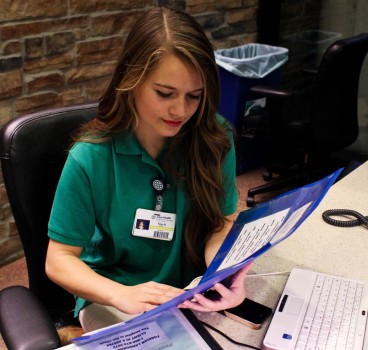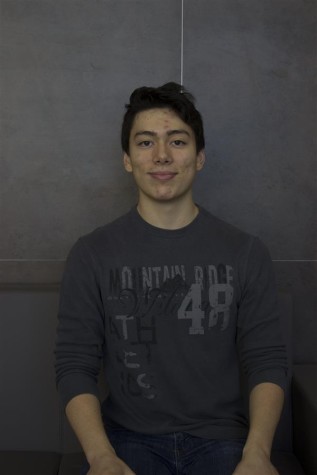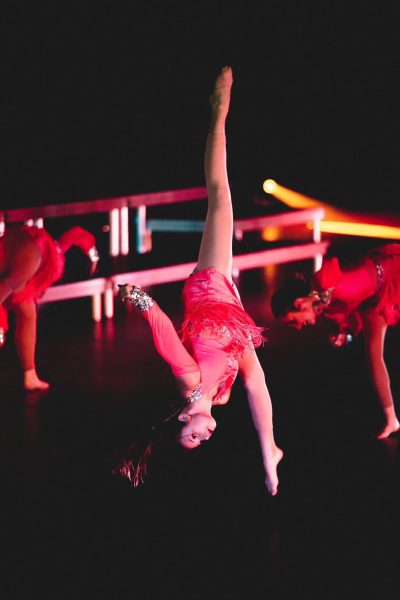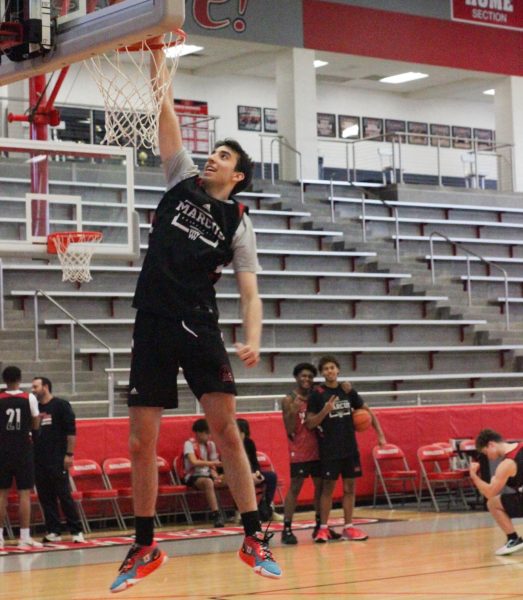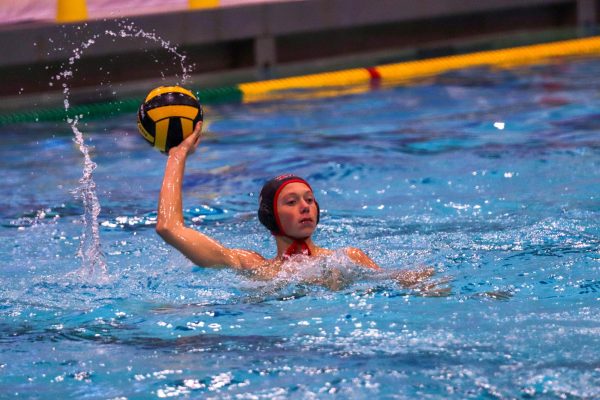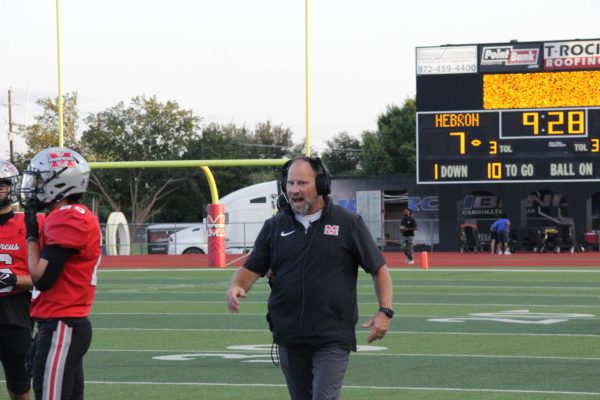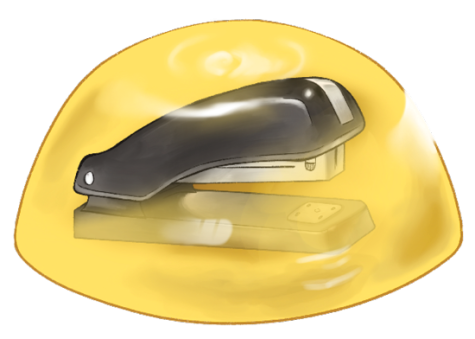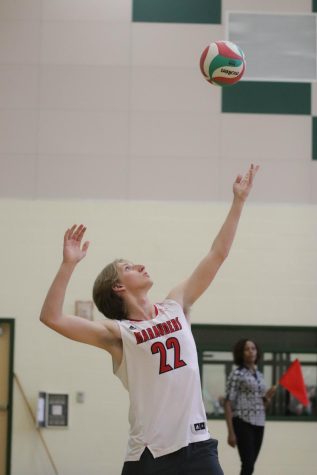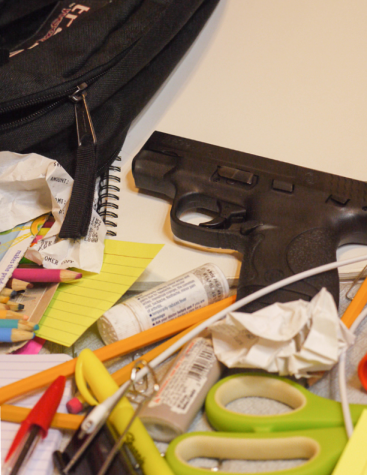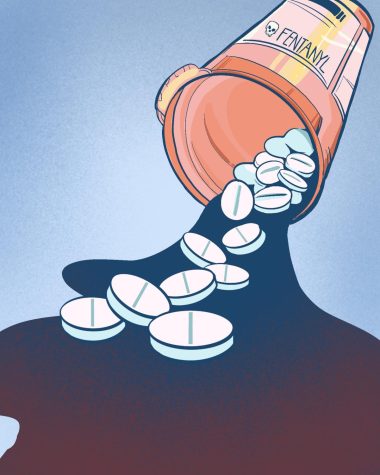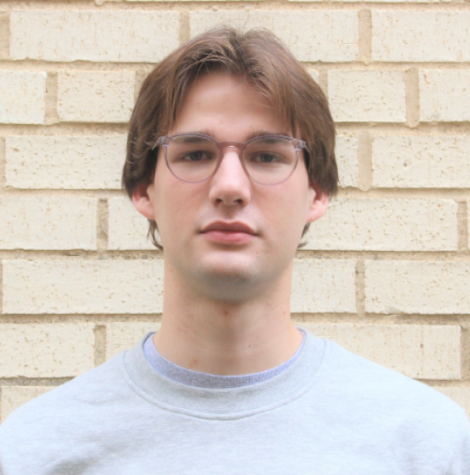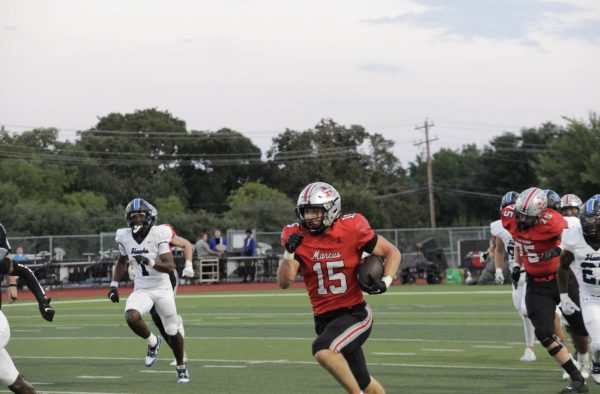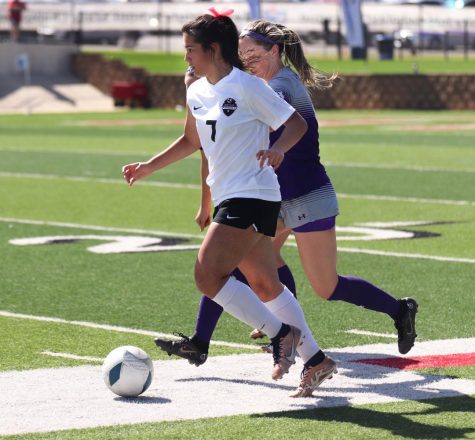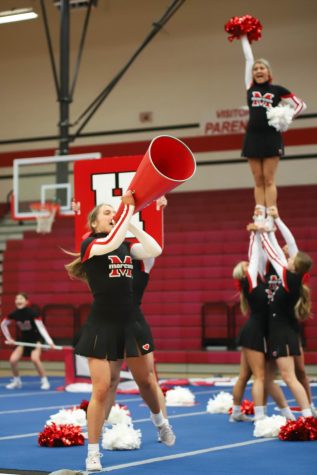Spinal setback
Former cheerleader battles nerve damage, may forego dream job
The cheerleaders could feel the cold air flowing into the Excite gymnasium. As they tumbled and flipped across the room, goose bumps formed on their legs. Although they were chilly, they kept up their spirit throughout practice by shouting their rehearsed cheers and keeping bright white smiles on their faces. Then a freshman, Shayla Eaklor stood watching the other girls, wondering how high she could get her back tuck. She wanted to show the rest of her squad what she was capable of doing.
When she felt ready, she started to rush across the spring floor. Once she felt she had enough momentum, she rotated and did a handspring. As she began to spin in midair, a panicked feeling swelled up inside her with each turn that came to pass. She feared the landing that was about to come.
“I got way too high,” Shayla said. “I continued rotating backwards and landed neck first on the spring floor.”
This fall created a shock that electrified her whole body. She didn’t feel pain. She only felt numb. Her back collapsed on the ground. Then her head banged against the floor, but the banging didn’t stop there. She could hear each thump like it was a basketball dribbling on a court. One. Two. Three. Four. Five. With each of these thuds she grew sleepier. After a moment of lying on the floor, Shayla stood up. She was sore from her neck down and knew that the next few days would be painful ones. But, she did not realize how painful the years to come would be.
***
This accident was the beginning of a new life for Shayla, now a senior. A life where even cheer, the very thing she loved to do, was painful. A life where some days she goes through so much pain that she has to convince herself to get up and go to school in the morning.
A few weeks later, when Shayla’s pain returned, her family took her to the Emergency Room. According to Shayla’s mother, Cherry Eaklor, even after multiple tests and a CAT scan, doctors were still not sure what was causing Shayla’s pain. She continued to participate in cheer, actively doing cheer routines and competitions.
“What really caused my damage was after the injury, I didn’t stop,” Shayla said. “I didn’t take another break so that my muscles could reform.”
This pain continued to grow in her body as the months passed. It became agonizing to simply sit down on the sideline bleachers at games. Cheer wasn’t fun to her anymore. After about a year and a half of constant spasms and jolts of pain through her arms and legs, she finally quit cheer.
“It stinks because cheerleading was like my life,” Shayla said. “It was one of the only things I felt that I was really good at.”
Shayla felt she had made the right decision for her health. However, she had cheered so long after injuring her neck and back that she was left with nerve damage.
One of the biggest results of her damage involved her hands. A month or two after the fall, her hands would lose control multiple times a week. At first, it didn’t happen very often. Then, they would cramp at random times and sometimes go completely numb.
***
The scorching curling iron was wrapped around Shayla’s light brown hair, a simple task she performed most days. Then she suddenly felt a cramp form in her hand. Her hand tightened more and more around the handle of the iron. Shayla found she had no control over her hand or the iron at all. The iron fell onto the side of her neck, burning her skin. She yanked her arm to move the iron away from her flesh. She winced from the heat, as if her skin had turned into an oven. She looked into the mirror to see how bad the burn actually was. Bubbles formed across the spot where the iron had scorched her. It looked as if her skin was melting. She finally started to realize how much the damage would affect her life.
“It just changed my whole life,” Shayla said.
***
The numbness in Shayla’s unsteady hands, along with her other injuries caused by her nerve damage, have made simple tasks, like brushing or curling her own hair, very difficult. Not only is Shayla’s everyday life affected but her long term goals are as well. Her dream of becoming a pediatric surgeon has gone from possible to unrealistic.
“It’s not reasonable anymore for me to be a surgeon because I don’t know what kind of effects it is going to have later on,” Shayla said. “I don’t know if when I’m operating on someone, if I’ll have this random hand cramp that could cause me to do things I’d regret.”
For as long as Shayla can remember, she has wanted to be a surgeon. When she was 7 years old, she would take apart her father’s old computers so she could attempt to rewire and fix them. Her tiny hands loved to solve puzzles.
“I wanted to take things apart and put them back together, and I was like, hey, I can do this with people,” Shayla said. “I can help people.”
In an attempt to alleviate her pain and possibly stop her hands from cramping, Shayla has been to multiple sessions of physical therapy. Having gone through everything from chiropractic care to muscle stripping therapy, Shayla said that nothing seems to help with her hand cramps or chronic back pain. After seeing countless doctors, Shayla’s mother said that the reason why Shayla’s pain is so intense is still unknown because of the complexities involved when dealing with nerve damage.
“I think that is the most frustrating part is knowing that she’s in pain and that there is something wrong, but nobody is able to tell us why,” Cherry said.
Shayla does not want to get her hopes high, but she is still pursuing her dream. Along with working at a hospital, she plans to shadow surgeons and take clinical classes. She plans to go to UT Southwestern for medical school after getting a bachelor’s degree in biochemistry.
“She’s a pretty determined little girl,” Cherry said. “I don’t think the damage will keep her from achieving her goals.”
She is not quick to give up, even if she may face challenges on the way.
“You can’t complain constantly and be all ‘woe is me,’” Shayla said. “That’s just not who I am. I’m going to work through it and live with it.”


